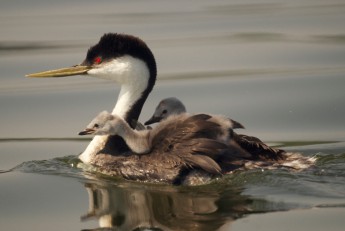There have been many articles published in the past week or so related to the value and efficacy of rehabilitating oiled birds, including those published by Der Spiegel, the AP, Newsweek’s blog, MSNBC, and National Geographic, to name a few sources. In fact, on the listserve of the Pacific Seabird Group (a remarkable organization filled with brilliant ornithologists), one of the many recent messages debating this topic claimed “I am unaware of any evidence that suggests cleaned birds have significant survival rates, let alone return to be regular breeders.”
If you review the scientific literature on the fate of oiled rehabilitated wildlife, however, a number of studies (a small, growing number but nevertheless quite clear in their conclusions) contradict this statement.
For those interested in this topic, there is an especially relevant paper that came out last year resulting from over 40 years of data on rehabilitation of oiled birds that the Southern African Foundation for the Conservation of Coastal Birds (SANCCOB) has amassed (see Wolfaardt, AC, AJ Williams, LG Underhill, RJM Crawford & PA Whittington. 2009. Review of the rescue, rehabilitation and restoration of oiled seabirds in South Africa, especially African penguins Spheniscus demersus and Cape gannets Morus capensis, 1983–2005. Afr. J. Mar. Sci. 31: 31–54). From long term data sets with large sample sizes they document survival rates of over 80% for rehabilitated penguins and Cape Gannets. Wolfaardt et al. cite various studies that also show that these rehabilitated birds can and do successfully breed. Noteworthy, Peter Ryan, using SANCCOB data, estimated that the African Penguin population was 19% larger than it would have been without the rehabilitation of oiled penguins, a substantial proportion of a declining population of birds (Ryan, P. G. 2003 Estimating the demographic benefits of rehabilitating oiled African Penguins. Pp. 25-29 inRehabilitation of oiled African Penguins: a conservation success story (D. C. Nel & P. A. Whittington, Eds.). BirdLife South Africa and the Avian Demography Unit, Cape Town, South Africa.)
Studies also exist from North America that have shown oiled birds can survive after rehabilitation and will successfully breed. Rick Golightly and colleagues (2002 Survival and behavior of western gulls following exposure to oil and rehabilitation. Wildl. Soc. Bull. 30:539-546.) showed that rehabilitated oiled Western Gulls survive as well (at least in the first 6 months of release) as unoiled, control gulls. Stern et al. (2000 Impact assessment of oil spilled from the New Carissa on the Western Snowy Plover along the Oregon Coast. Unpubl. Rept. by the Oregon Natural Heritage Program and The Nature Conservancy to TMM Co., LTD; Coos Bay District Bureau of Land Management; Oregon Dept. Fish and Wildlife; Dunes National Recreation Area; U.S. Fish and Wildlife Service. 32pp. ) documented significant post-release survival of the threatened Snowy Plover, including successful breeding. Weston et al. (2008. Waterbirds) demonstrated similar results with treating oiled, Hooded Plover of Australia with birds successfully breeding. This is not to say that rehabilitated birds always do as well as birds that have not been oiled. Various studies have shown this is not the case (to name a few: Anderson, D. W., and F. Gress, and D. M. Fry. 1996. Survival and dispersal of oiled Brown Pelicans after rehabilitation and release. Marine Pollution Bulletin 32:711-718; Anderson, D. W., S. H. Newman, P. R. Kelly, S. K. Herzog, and K. P. Lewis. 2000. An experimental soft-release of oil-spill rehabilitated American coots (Fulica Americana): lingering effects on survival, condition and behavior. Environmental Pollution 107:285-294; Camphuysen, C. J., P. Duiven, M. P. Harris, and M. F. Leopold. 1997. Recoveries of Guillemots ringed in the Netherlands: the survival of rehabilitated oiled seabirds. Sula 11:157-174 (in Dutch with English summaries)).
However, the increasingly successful release rate of rehabilitated oiled seabirds by SANCCOB through the past decades offers strong scientific data showing that, with proper facilities, equipment, and trained personnel successful rehabilitation of oiled wildlife can be achieved and we can get better at it.
To address the more recent information related to this topic, we have recently submitted a paper to Biology Letters, and have asked for expedited editorial review to make sure it comes out in the literature as soon as possible. Obviously, prevention of oil spills will be the best solution to the resulting rehabilitation dilemma oil spills pose. In the meantime however, when spills happen, past studies show that real conservation success can be achieved through rehabilitating oiled birds and other wildlife.
– Nils and Mike

Thank you for providing this information, and with references… certainly it will help address the sudden rash of anti-birdwashing stories in the gray journalism sector. It is so important to let the public know that with unstinting attention to detail and the support of hard-learned protocols, oil-impacted wild animals can be restored to their lives. It is excruciating to see the unsupported slander of oiled wildlife rehabilitation in the financial pages.